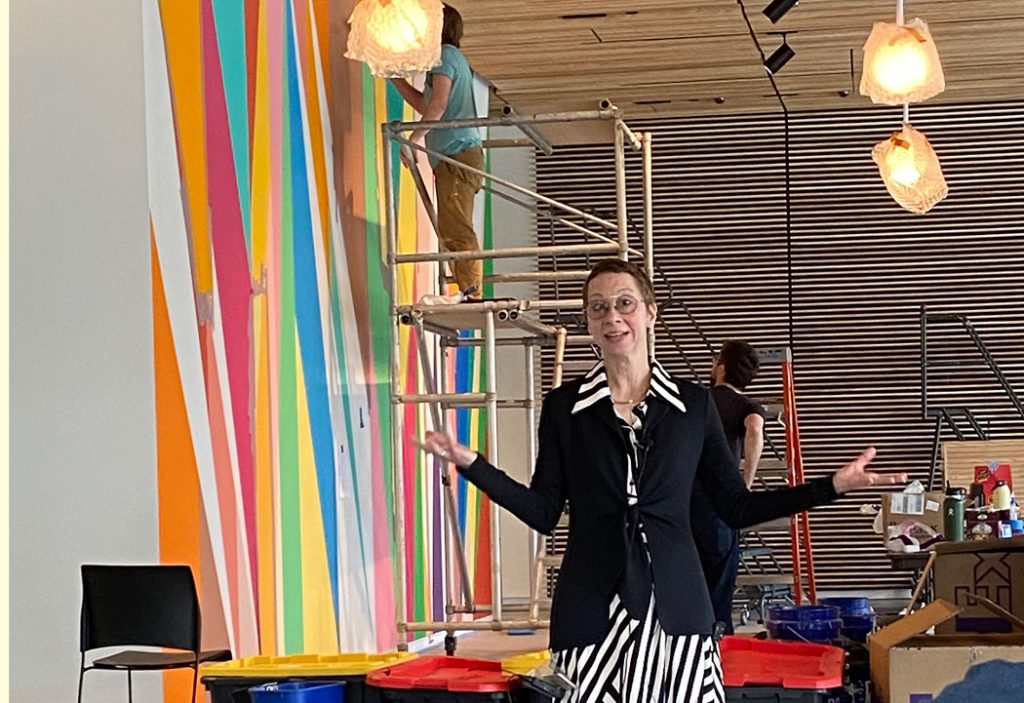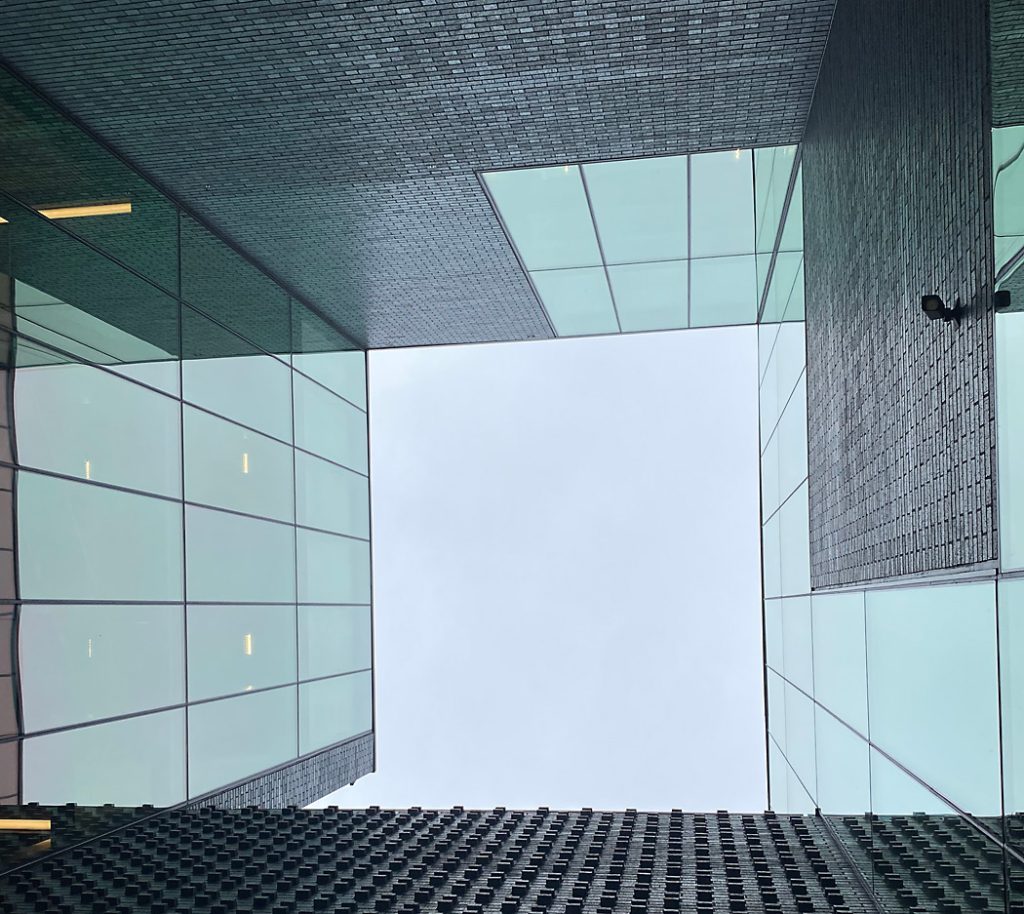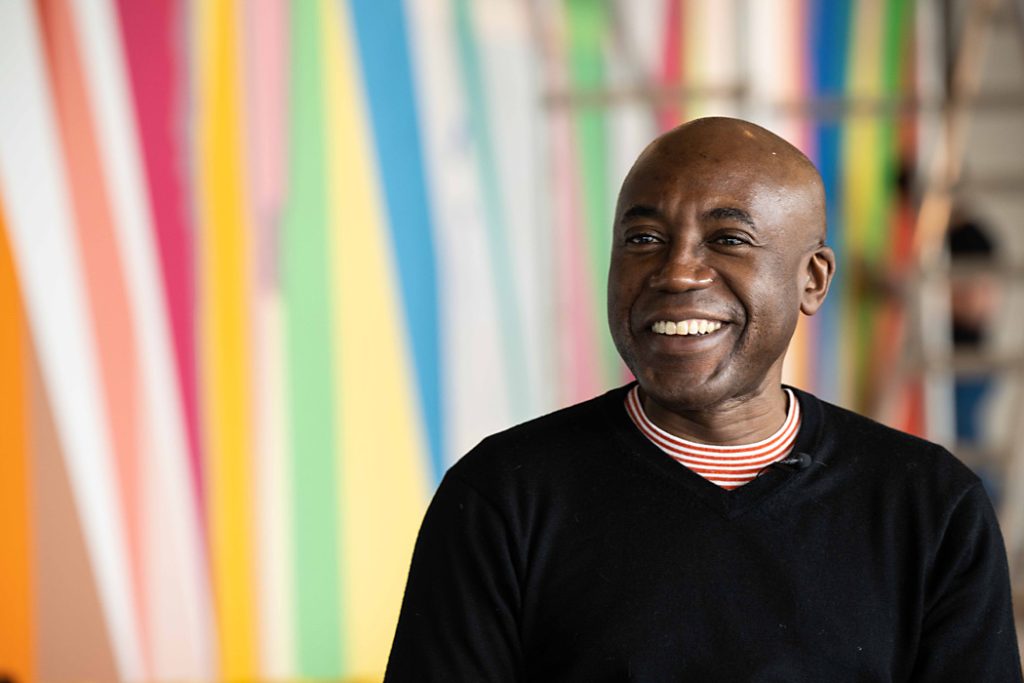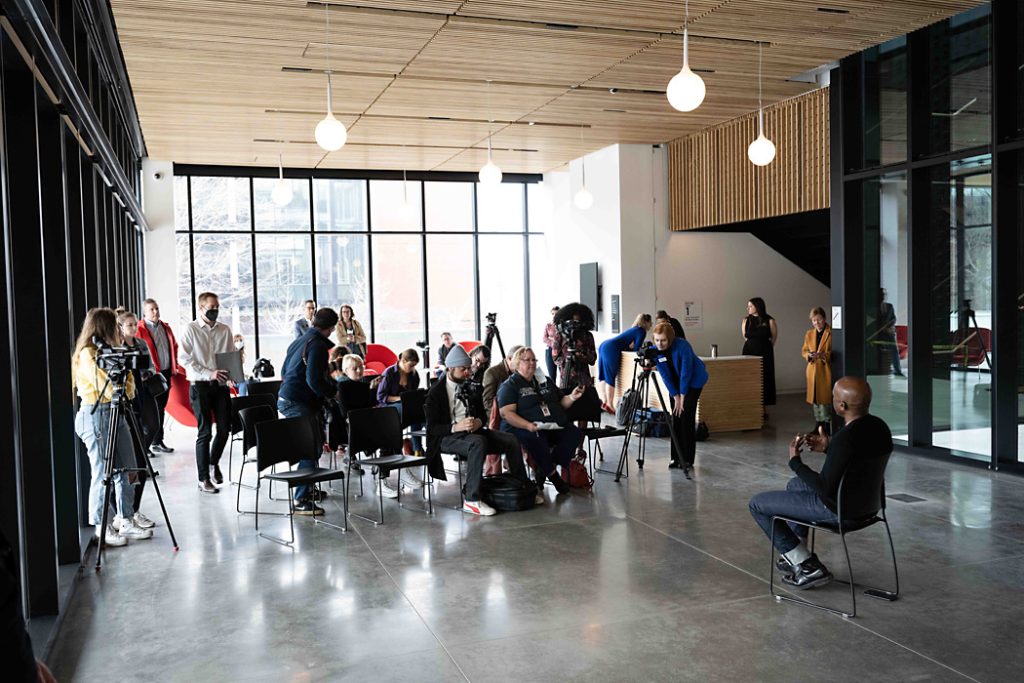
In advance of their grand opening on August 26, the new Stanley Museum of Art on the University of Iowa campus is quickly crossing off items on their to-do list. The building’s dramatic façade, comprised of more than 15,000 square feet of glass and nearly a quarter-million black bricks, stands defiantly along the banks of the Iowa River. Inside, the museum is humming with activity as workers install finishing touches to galleries and classrooms, artists collaborate to complete original works, and curators welcome back the art that has waited 15 years to return home.
“I can’t wait to welcome everyone in,” said Dr. Lauren Lessing at a recent sneak peek of the new facilities. Dr. Lessing was hired as the ninth director of the University of Iowa Museum of Art in 2018, but is giddy to finally have a museum to share with the community. “I am a very lucky director to have stepped into a community which is so committed to this museum.”
In 2008, when Dr. Lessing was still the Director of Academic and Public Programs at the Colby College Museum of Art in Maine, flood waters overtook the University of Iowa Museum of Art.

“I watched on my computer in my kitchen when the flood swamped the original museum, and I saw community members, students, faculty, and staff come together to lift the art from that museum,” she explained. Even then, Dr. Lessing felt a special connection to art and Iowa. In the 1950s, her parents had studied under Ulfert Wilke, who became the first UIMA director in 1969. “I was here as a baby [and there I was] watching the whole community come together. And I said, ‘There is no doubt in my mind that the museum is coming back, because where else would this happen?’ This is a really special place.”
So when the director’s position became available in 2018, she jumped at the chance. “I didn’t want to work anywhere else,” recalls Dr. Lessing.
After the flood waters receded in 2008, FEMA denied funding to replace the museum, claiming the building was still habitable, but insurance companies refused to underwrite the collection if it remained so close to the river. For the next 14 years, the bulk of UIMA’s collection remained in storage. Jackson Pollock’s Mural (1943), undeniably the most well-known work in the collection, underwent a year-long restoration at the Getty Museum before embarking on a world tour where it was viewed by more than 2.7 million people.
Upon its return to the Stanley, Mural will hang in the DeWolf Family Gallery, named in honor of a $1.5 million donation from Chris and Suzy DeWolf of Cedar Rapids. The tradition of individuals supporting the arts at Iowa is another connection between the old building and the new Stanley. When the original UIMA was proposed, more than 2,000 individuals, businesses, and community groups donated money to fund the project. Fifty years later, private support from hundreds of corporations, individuals, and alumni like the DeWolf family, combined with facilities bonds, funded the $50 million construction without cost to university students or Iowa taxpayers.
“It is a real testament to how much people love this museum, this collection, and this campus,” Dr. Lessing said. In fact, the UIMA was rechristened to honor the multigenerational support of the Stanley Family of Muscatine, Iowa.
The building itself was designed with a focus on collaboration and community. Lead architect Rod Kruse of the Des Moines firm BNIM Iowa created a design onto the precise footprint of a former parking lot, preserving the sanctity of the adjacent Gibson Square Park. Even those parking spaces still exist, only underground, below the museum. That space also provides flood protection. Should another catastrophic flood occur, the waters will wash through the garage but leave the museum and its collection safe and dry.
Gibson Square Park will become home to some of the Stanley’s sculpture collection, and even the steps leading up from the park to the museum’s entrance were conceived with artistic collaboration in mind.“It’s a stage,” said Dr. Lessing. “We can use it as a space for musical performances or theater.”
Once inside the lobby, guests will find the Light Well, an atrium stretching 60 feet from the lobby floor to the rooftop parapet. “It is open to the air, so the light and rain and snow will fall down through the light well. I love the idea of people going outdoors through the center of the building.”
Lessing and her colleagues have dubbed this entrance space Thresholds as a way of welcoming visitors, “to bring them in, to engage them in this space, to animate the lobby.”

One huge wall on the first floor has been dedicated as a canvas for a series of temporary commissions. Artist and professor Odili Donald Odita was selected to create the first mural in this space. His team was busily climbing scaffolds to work on the mural Surround, which will cover the entirety of the lobby wall.
Odita was born in Nigeria, but lived in Iowa City as a young child while his father studied printmaking at the University of Iowa with the legendary Mauricio Lasansky. Odita later went into the family business before developing a career as an abstract painter, focusing on the kaleidoscopic qualities of light and color and how they resonate themes of race and society.
“You cannot function as a proper university without a museum like this,” Odita said. “Places like this provide inspiration, not only for art students, but for everyone.”

On the third floor of the museum, specially designed classroom spaces have walls that can pop out to become easels where art might be displayed or created. In addition, the Stanley’s entire collection will be housed on site and available upon request. Students, faculty, and members of the public can arrange to reserve a classroom and have works from the collection brought to that space.
The walls of the second floor gallery spaces are still bare, awaiting the final coat of paint. When the museum opens, however, even these galleries will allow the flexibility to create exhibits both large and small. The walls themselves can move, providing grand open spaces for visiting exhibitions or creating an intimate viewing area.
The inaugural exhibition is titled, appropriately, Homecoming, and Lessing promises it will include the “greatest hits” of the collection, including Pollack’s Mural. In fact, Mural was one of the last challenges facing the architects, inspiring a custom-designed freight elevator which is just large enough to accommodate Mural in its 1.6 ton shipping crate.
Though the paintings are yet to appear on the walls, the new Stanley promises to bring art back to Iowa City. The museum’s staff invite you to cross the threshold to discover what’s inside. They just need a minute to take a breath and let the paint dry.
